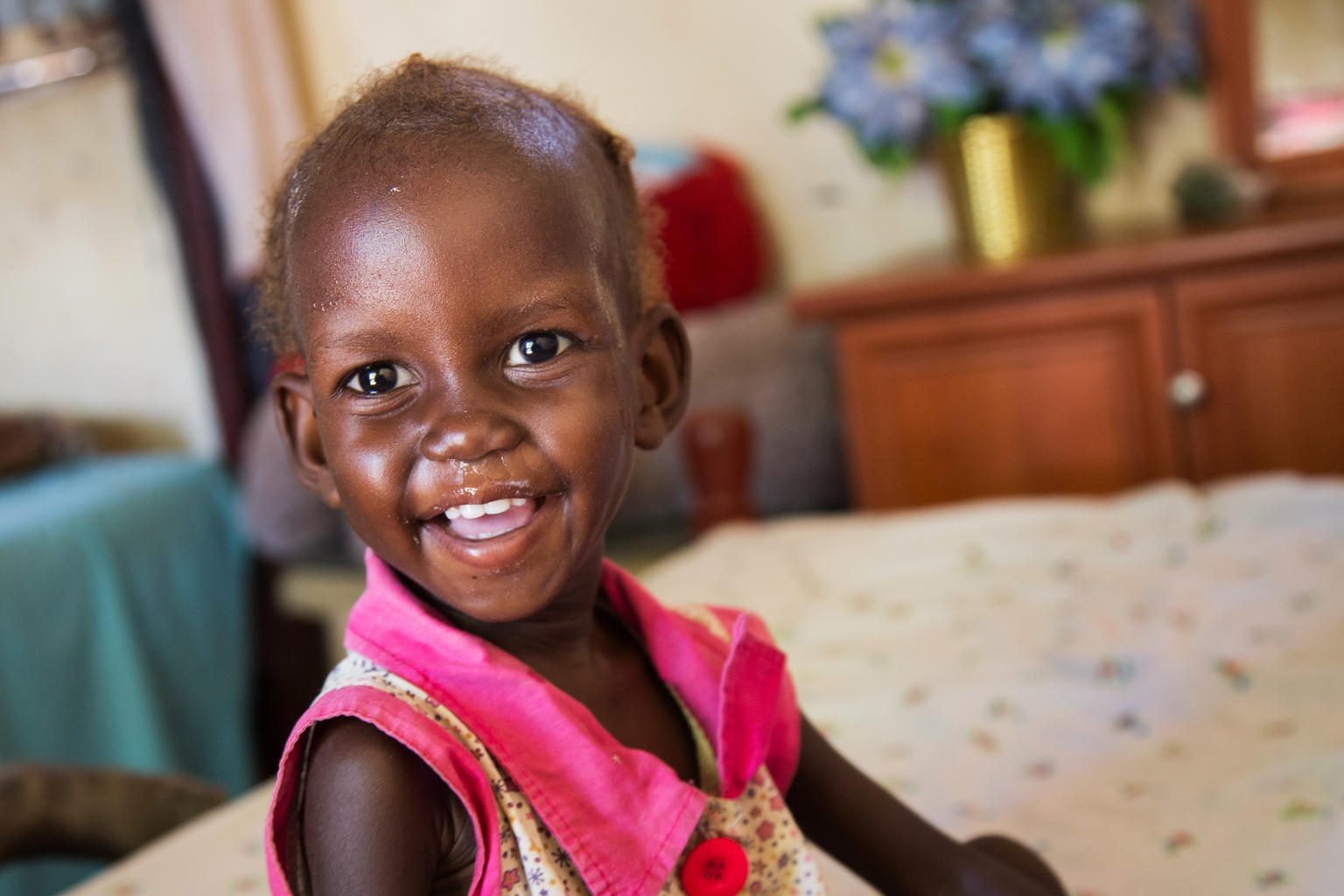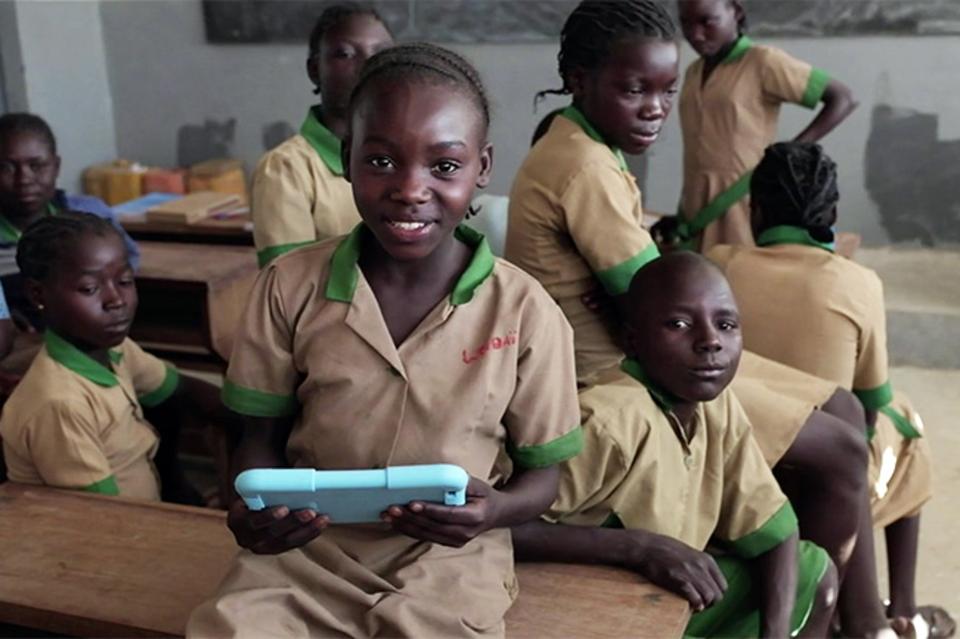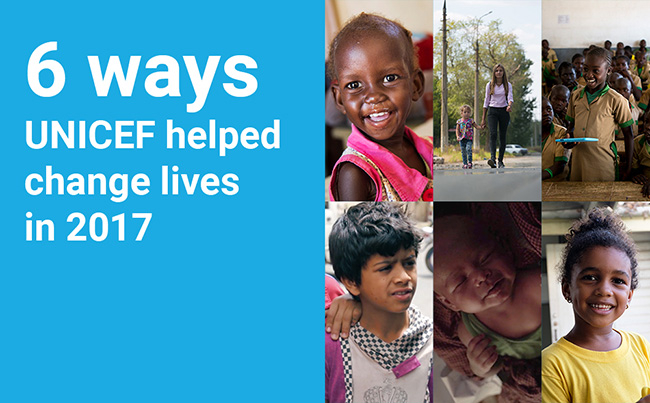联合国儿童基金会2017年改变生命的6种方法
2018-01-17
回顾2017年的人道主义形势,负面消息成为焦点:暴力冲突沒有任何缓和的迹象、儿童不能在安全的地方生活、自然灾害夺去数百万人的家园及生命。但在种种灾难中,仍有希望之光在闪烁:女童从早婚的困境中获救、儿童重返校园、新生儿接种能预防致命疾病的疫苗。这些事情时刻提醒我们,即使在最绝望的情况下,我们仍能与社区、家人、儿童携手作出改变。以下是联合国儿童基金会(UNICEF)及合作伙伴2017年改变生命的方法。

© UNICEF/UN0152308/Gonzalez Farran
玛丽亚(Maria)漫长的康復之路
2017年2月,南苏丹部分地区宣布陷入饥荒。儘管大规模的饥荒已有好转,但形势仍非常危险,预计2018年有超过100万名儿童患上营养不良。两岁的Maria被送进UNICEF支援的治疗中心时严重营养不良,更有并发症。仅仅一个月后,她便完全康復。过去4年,UNICEF及合作伙伴已拯救超过60万名儿童,Maria就是其中一个。

© UNICEF Yemen/2017/Fuad
义工与也门霍乱战斗
4月底,也门爆发歷来最大规模的霍乱及腹泻疫情。由于食水及衞生设施在冲突中被破坏,疫情迅速蔓延全国,脆弱儿童的健康状况受到威胁,他们佔一半的疑似病例和25%死亡病例。为控制疫情和防止病例增加,UNICEF支援社区自发组织教导市民饮食安全知识的义工。法蒂亚(Fathya)表示:「霍乱是非常危险的疾病,会引致死亡。我有孩子也患霍乱,所以我想做义工帮助其他人。」儘管疫情仍然严重,但新增的霍乱病例个案自10月已有所下降。

© UNICEF Ukraine/2017/Filippov
凯瑞娜危险的上学之路
乌克兰东部是目前全球地雷隐患最严重的地区之一,威胁22万名儿童的生命。他们生活、玩乐和上学的地方佈满地雷、未爆炸的炮弹,及其他极度危险的战争遗物。凯瑞娜与家人仍在地雷接触綫附近的地区生活。每天上学时,她都要面对受伤甚至死亡的风险。透过参加UNICEF支援的地雷风险教育宣传活动,她学会如何安全避开这些危险。
[su_youtube_advanced https="yes" url="https://www.youtube.com/watch?v=cSlojfiV__8" width="1200" height="675"]
奥马尔:在难民营出生2017年8月,缅甸若开邦爆发暴力冲突,超过60万人跨越边境逃往孟加拉,当 中6成是儿童。奥马尔在妈妈跨境不久后在难民营出生。由于缺乏足够及合适的食物,两母子很快患上营养不良。UNICEF扩大治疗营养不良和疾病等紧急应对工作,帮助奥马尔和妈妈完全康復。
![On 10 September, 6-year-old Bella Rian Jackson smiles outside the National Technical Training Centre in St. John's, capital of the island of Antigua. The education facility currently shelters displaced families from Barbuda whose homes were destroyed by Hurricane Irma. Bella, from Antigua, volunteers at the shelter with her grandparents, sorting and folding donated clothes, cleaning and tidying up the communal areas, and helping to distribute food and supplies. “I wanted to volunteer with my grandma,” Bella says. “If the children can’t come here, they’d [sic] have nowhere to go, and another storm could come,” she adds. More than 130 people, including scores of children, sheltered at the centre when the facility was at its busiest. On 6 September 2017, Hurricane Irma, the strongest hurricane ever recorded in the Atlantic, pummelled islands in the Eastern Caribbean. The category 5 storm left a path of destruction – especially on Anguilla, the British Virgin Islands, Barbuda and Turks and Caicos Islands. Some 73,000 people in this area, including 20,000 children, are affected, and at least 132 schools have been damaged. Irma disrupted communication networks in many areas and damaged or destroyed infrastructure, including roads, idges, hospitals and schools. The island of Barbuda suffered extensive damage during the disaster. Over 90 per cent of its buildings were destroyed, with homes, schools, the island’s only hospital, and other infrastructure destroyed or severely damaged. A 2-year-old boy was also killed during the storm, and most of Barbuda’s nearly 2,000 residents have been displaced. Officials quickly evacuated the vast majority of the population to Antigua, Barbuda’s sister island, ahead of an anticipated category four hurricane (Hurricane Jose) expected to wreak additional destruction on the already devastated island. Antiguans have rallied to support their compatriots, with church and community groups volunteering at shelters hosting](/wp-content/uploads/4000/01/UN0120231.jpg)
儿童携手应对飓风艾玛带来的破坏
2017年夏末初秋时,飓风「哈维」、「艾玛」和「玛丽亚」为加勒比海地区东部、海地和古巴连续带来破坏性灾难。巴布达超过9成建筑损毁,大部分居民失去家园和学校后被转移到安提瓜,当地的居民向他们伸出援手。6岁的贝拉‧里安‧杰克逊身为众多义工之一,在收留巴布达家庭的避难所提供支援。「如果儿童不来这裏,他们就无处可去。」UNICEF在岛上准备救援物资,並为受风暴影响而无家可归的儿童提供教育活动和社交心理辅导。

© UNICEF Cameroon/2017
瓦依拜在数码世界中茁壮成长
12岁瓦依拜在喀麦隆远北地区生活,那裏经常被「博科圣地」组织袭击。在目前所在的村庄定居前,她与家人被迫逃离尼日利亚的家园。现在,她在当地一间首批接触网络的学校上课。她说:「我还记得2017年1月第一次上网的情况。以前,我对互联网毫无认识。」透过提供平板电脑及接触互联网,UNICEF「连接我的学校」计划帮助瓦依拜和朋友学习新知识,为他们展开拥有无限机会的世界。










